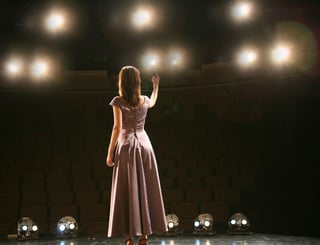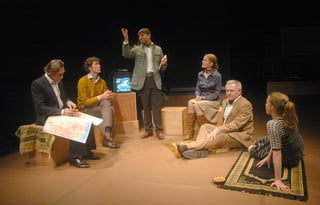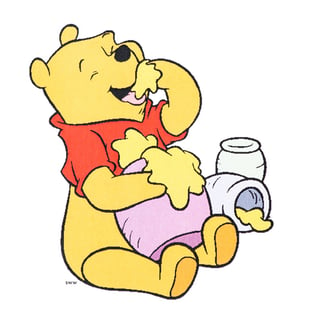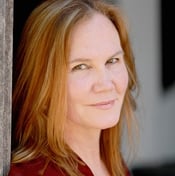Depth Psychology and the Creative Arts: Theater, Therapy, Individuation, An Interview with Lisa Schouw
A guest post by Bonnie Bright, Ph.D.
Lisa Schouw has had a long career in the arts, in singing, songwriting, theater, and as a teacher of those arts. She began her formal study as a depth psychotherapist later in life when she was nearly 50, after discovering Pacifica and pursuing her Master’s degree in the Engaged Humanities and the Creative Life Program there.
While the early part of her life was very creative as she moved back and forth between dance, music, and theater, Schouw had had a longstanding interest in psychology, and recognized the need to provide a container to “hold” the personal material which would often unfold or “unravel” as they started to work with music or theater. When she discovered depth psychology and Pacifica, it occurred to her that she had found a way to “stitch those worlds together.” Depth psychology provides powerful tools for individuals to be witnessed in their process, whether it be remembering and healing from a trauma via Schouw’s psychotherapy practice, or tapping into deep personal or collective emotions when creating a piece of theater, which she often sees in her teaching capacity. Either way, deep listening and creating a fertile space for transformation to occur is paramount.
 Indeed, most of us can conceive of how creativity comes from that pregnant space where there is something lying in wait to emerge, so, when one listens, it provides a way for it to be born. I find it fascinating that Schouw is making the correlation between doing something creative like creating a play, and being in the therapy room. In both instances, bringing something unique into relationship with something else, an “other”—whether a human being, an idea, or an image—generates a creative spark, she notes. If, as a therapist or a teacher, she can trust that process and simply find that fertile space and sit in it, something will arise which may surprise both her and her client.
Indeed, most of us can conceive of how creativity comes from that pregnant space where there is something lying in wait to emerge, so, when one listens, it provides a way for it to be born. I find it fascinating that Schouw is making the correlation between doing something creative like creating a play, and being in the therapy room. In both instances, bringing something unique into relationship with something else, an “other”—whether a human being, an idea, or an image—generates a creative spark, she notes. If, as a therapist or a teacher, she can trust that process and simply find that fertile space and sit in it, something will arise which may surprise both her and her client.
Among the most potent ideas she has encountered in depth psychology is archetypes, patterns that repeat across cultures and time. Understanding the power of archetypes has provided her with tools to help clients and students begin to realize what’s at work in their lives. Through an archetypal lens, we can start to grasp that we are each part of a much larger story, and that can be profoundly liberating. Each of us is part of an integral net that can “hold” us, allowing us to relax and release into something we can’t fully inhabit if we’re only focused on our own lives, she insists. For anyone who struggles with loneliness, grief and disconnection, integrating the narrative that we are part of something larger can provide support and healing.
 The value of an archetypal perspective reaches beyond the therapy room. Theater itself is firmly based on work that arises out of archetypes: It’s a “playground” for it. Since early humans sat around fires telling stories, we have co-inhabited with archetypes; thus, the concepts and the language of depth psychology is perfectly placed to move seamlessly through our individual story, the collective story, and the therapy room, Schouw relates.
The value of an archetypal perspective reaches beyond the therapy room. Theater itself is firmly based on work that arises out of archetypes: It’s a “playground” for it. Since early humans sat around fires telling stories, we have co-inhabited with archetypes; thus, the concepts and the language of depth psychology is perfectly placed to move seamlessly through our individual story, the collective story, and the therapy room, Schouw relates.
Archetypes provide us with a chance to explore potential differences from our entrenched sense of identity, values, thoughts, and values. It’s like opening a closet and trying on an interesting hat or a beautiful coat, Schouw relates: Changing costumes is a part of theater. In the therapy room, it’s important to give people a chance to tell their story, and then to go back and look at different aspects of their story. Schouw creatively utilizes cinematic terms to explain the power of the archetypal lens: The story can be “lighted” differently, or brought to a different frame or shot, closer in or wider. These changes in perspective allow us to “inhabit” the story as a different archetype.
Through such shifts in lenses, we explore what it’s like to be the hero in our own story, or alternatively the healer, the warrior, or the mother. It enables us to play with the ideas, to bring alternate characters or archetypes into the room. It makes the concepts more “pliable,” she reports, which, when considered in conjunction with what we know from neuroscience about the plasticity of the human brain, seems to apply to the psyche as well. We can move in and out of these archetypal perspectives.
As a therapist, Schouw perceives that some individuals, due to their life experiences that keep them in a specific paradigm, tend to get stuck in “one room,” perhaps not even realizing there’s a door that opens out into alternate ways of being. It’s helpful to know that archetypes provide a fluidity which is also an invitation to play.
Music, too, can provide fluidity and a doorway to transformation. Music has form, and that can provide boundaries, which make a container in which transformation can occur. “We can’t endeavor to reside in an area that is completely unbounded,” Schouw confirms. Music is also a language you can share with another human being. If we were to intone the same note, Schouw suggests, we are instantly aligned on a cellular, cognitive, and imaginal level. We vibrate on many levels of meeting one another.
Often, in her teaching capacity, Schouw will ask students to bring in a song that is meaningful for them in some way, and once they start to sing it, she tends to find they can’t make it all the way through the song because they start crying or laughing in the process. This can quickly provide some leverage, she relates, offering a way “in” to the emotion is that is driving them. Music serves to stop our rational intellect and take us straight to the emotion. “It takes you to the heart of things very quickly. It ‘unmasks, you,” she reveals.
 Perhaps one of the most profound ways Schouw is integrating depth psychology into creative practice is through what she calls “theater of testimony,” the creation of a theatrical piece which arises from the gathering of “real people’s stories” portrayed in conjunction with some current aspect of social or cultural issues. For example, Schouw contends, right now the legislature in Australia where she lives, the legislature is debating the legalization of gay marriage. Schouw’s theatrical students interviewed 26 individuals from the community, who each had stories to tell about how they are affected by the issue. The students then wrote a script for an hour-long play based on the stories and offered the production to the community. This gathered the students, the individuals who were interviewed, the audience into an effective container where the issue, which might be taboo or highly politicized elsewhere, could be reflected upon.
Perhaps one of the most profound ways Schouw is integrating depth psychology into creative practice is through what she calls “theater of testimony,” the creation of a theatrical piece which arises from the gathering of “real people’s stories” portrayed in conjunction with some current aspect of social or cultural issues. For example, Schouw contends, right now the legislature in Australia where she lives, the legislature is debating the legalization of gay marriage. Schouw’s theatrical students interviewed 26 individuals from the community, who each had stories to tell about how they are affected by the issue. The students then wrote a script for an hour-long play based on the stories and offered the production to the community. This gathered the students, the individuals who were interviewed, the audience into an effective container where the issue, which might be taboo or highly politicized elsewhere, could be reflected upon.
This kind of application of depth psychology allows individuals who had perhaps never had a chance to be in the presence of someone “other”—or other than themselves—to be able to be emotionally affected by the conflicts and challenges of that particular social group. If it’s done well, this process can create meaningful social change, Schouw maintains, asserting, “It is essential that we bring our attention to social issues at the heart of artistic endeavor in these times, and it is the voice of the artist that will bring social change.” Further, theater-making contributes to the healing of earth and culture by reminding us we are not separate from nature, Schouw believes. Part of the illness of the planet and the psychological illness of people in the western world is because we have lost that deep knowing that we are part of nature. More, Schouw is particularly captivated by significant (and growing) concerns around humans that have been displaced. With the multitude of global issues for refugees, immigrants and asylum seekers, she often contemplates how individuals who are uprooted from their home places and are trying to find a new sense of home in a far-off place, can be facilitated by the creative process, and specifically by the sharing of stories.
Speaking of far-off places, I am highly cognizant of the fact that Schouw, who lives in Australia, elected to complete her Master’s in the Engaged Humanities and the Creative Life program at Pacifica, which is located in Santa Barbara, California. Her story is a “lovely example of how depth psychology operates,” she laughs. At a time when she felt stuck and bored in her own life, she came across one paragraph about Pacifica on the web, and it intrigued her profoundly. She looked Pacifica up and “recognized herself,” she now reports: She had been “speaking in metaphors” for years and realized this was the language of depth psychology. Though she initially resisted the call due to the distance, a year later, in the same office with the same feeling of being stuck and bored, an email popped up from Pacifica asking if she was still thinking about it.
She was. She resolved to make some changes in her life to make it possible to attend, and spent the next two years traveling from Australia to Santa Barbara every three months for the residential gatherings. There was something vitally important about traveling across the world and immersing herself in the culture of Pacifica. Those journeys back and forth to the campus provided her with a map, she relates. She realized the importance of being able to make a difference one person at a time; one journey at a time. It not only enabled her to reconnect to her own creativity, which she felt she had lost, but it also allowed her to collaborate with many other people that she would never have met and brought her into a relationship with depth psychology that has profoundly changed her experience of life. This has helped her not feel too overwhelmed by what’s going on in the world, and wondering what she can do about it, she reveals.
 In closing, I had to ask about depth psychological perspectives from Winnie the Pooh. Schouw recently published an article in Depth Insights evocatively entitled, “Jung and the Way of Pooh: A Guide to Individuation and Archetypes in the Hundred Acre Wood.” [1] In this entertaining but informative article, Schouw engages her gift for metaphor by exploring how Pooh, a “bear of little brain,” provides an aspect of Jungian thought. Even while “bumping down the stairs,” a moment of clarity manifests upon which he recognizes that there must be “another way,” but he needs to stop bumping to think about it. This captures depth psychology very simply, Schouw suggests. We have to develop the capacity to live in the mystery of life and our personal journey, even when we don’t understand what it’s all about. For a moment, Pooh is clear and then loses it again. He exemplifies Jung’s notion of holding the tension of the opposites. We are constantly in motion between opposites, and getting to know the other characters in the story—that is, the other aspects of our own psyche—can allow us to gain clarity and more beyond the rut or the stuck places.
In closing, I had to ask about depth psychological perspectives from Winnie the Pooh. Schouw recently published an article in Depth Insights evocatively entitled, “Jung and the Way of Pooh: A Guide to Individuation and Archetypes in the Hundred Acre Wood.” [1] In this entertaining but informative article, Schouw engages her gift for metaphor by exploring how Pooh, a “bear of little brain,” provides an aspect of Jungian thought. Even while “bumping down the stairs,” a moment of clarity manifests upon which he recognizes that there must be “another way,” but he needs to stop bumping to think about it. This captures depth psychology very simply, Schouw suggests. We have to develop the capacity to live in the mystery of life and our personal journey, even when we don’t understand what it’s all about. For a moment, Pooh is clear and then loses it again. He exemplifies Jung’s notion of holding the tension of the opposites. We are constantly in motion between opposites, and getting to know the other characters in the story—that is, the other aspects of our own psyche—can allow us to gain clarity and more beyond the rut or the stuck places.
This story, along with Schouw’s other work, reveals how depth psychology can serve as a vehicle that can give us much-needed form and structure so that we can better navigate our lives, even when we feel we are battered by the back and forth, the “bumping about,” in the storms of life.
Humans are pulled in both directions, Schouw relates. On one hand, we want to stay where we are and not change, and on the other, Jung’s idea of individuation suggests we are pulled toward wholeness. But wholeness is not a singular thing; We are a myriad of parts. If we can spend our waking life exploring those parts and our nights dreaming, journeying through those parts in a different way, we stand a chance of weathering the storm. Without it, we despair, or perhaps worse, we go to sleep and become passive, lacking any sense of action or agency. Part of the reason the western world has the issues it does is because we’ve lost that sense of presence and wonder, she asserts. Depth psychology supplies us with the fuel; the spark toward that presence and wonder. It gives us the language to be in conversation with our own lives and the lives of others.
Listen to the full audio interview with Lisa Schouw, M.A. here (approx. 40 mins)
Learn more about Lisa’s work at here -->
Full video interview with Lisa Schouw and Bonnie Bright is posted below
[1] Read the article in Depth Insights at http://www.depthinsights.com/Depth-Insights-scholarly-ezine/jung-and-the-way-of-pooh-a-guide-to-individuation-and-archetypes-in-the-hundred-acre-woodby-lisa-schouw/
 Lisa Schouw (BCHC, MA, CMPACFA), is a Doctoral Candidate (University of Sydney – Theater and Performance Studies Department). She has a Masters in Engaged Humanities & the Creative Life with an emphasis in Depth Psychology (Pacifica Graduate Institute, USA). She works in Australia as a clinical psychotherapist, singer/songwriter, theater maker, and singing teacher. Her passion is the part creativity plays in the individuation process of her clients and fellow artists..
Lisa Schouw (BCHC, MA, CMPACFA), is a Doctoral Candidate (University of Sydney – Theater and Performance Studies Department). She has a Masters in Engaged Humanities & the Creative Life with an emphasis in Depth Psychology (Pacifica Graduate Institute, USA). She works in Australia as a clinical psychotherapist, singer/songwriter, theater maker, and singing teacher. Her passion is the part creativity plays in the individuation process of her clients and fellow artists..
 Bonnie Bright, Ph.D., is a graduate of Pacifica’s Depth Psychology program, and the founder of Depth Psychology Alliance, a free online community for everyone interested in depth psychologies. She also founded DepthList.com, a free-to-search database of Jungian and depth psychology-oriented practitioners, and she is the creator and executive editor of Depth Insights, a semi-annual scholarly journal. Bonnie regularly produces audio and video interviews on depth psychological topics. She has completed 2-year certifications in Archetypal Pattern Analysis via the Assisi Institute and in Technologies of the Sacred with West African elder Malidoma Somé, and she has trained extensively in Holotropic Breathwork™ and the Enneagram.
Bonnie Bright, Ph.D., is a graduate of Pacifica’s Depth Psychology program, and the founder of Depth Psychology Alliance, a free online community for everyone interested in depth psychologies. She also founded DepthList.com, a free-to-search database of Jungian and depth psychology-oriented practitioners, and she is the creator and executive editor of Depth Insights, a semi-annual scholarly journal. Bonnie regularly produces audio and video interviews on depth psychological topics. She has completed 2-year certifications in Archetypal Pattern Analysis via the Assisi Institute and in Technologies of the Sacred with West African elder Malidoma Somé, and she has trained extensively in Holotropic Breathwork™ and the Enneagram.



